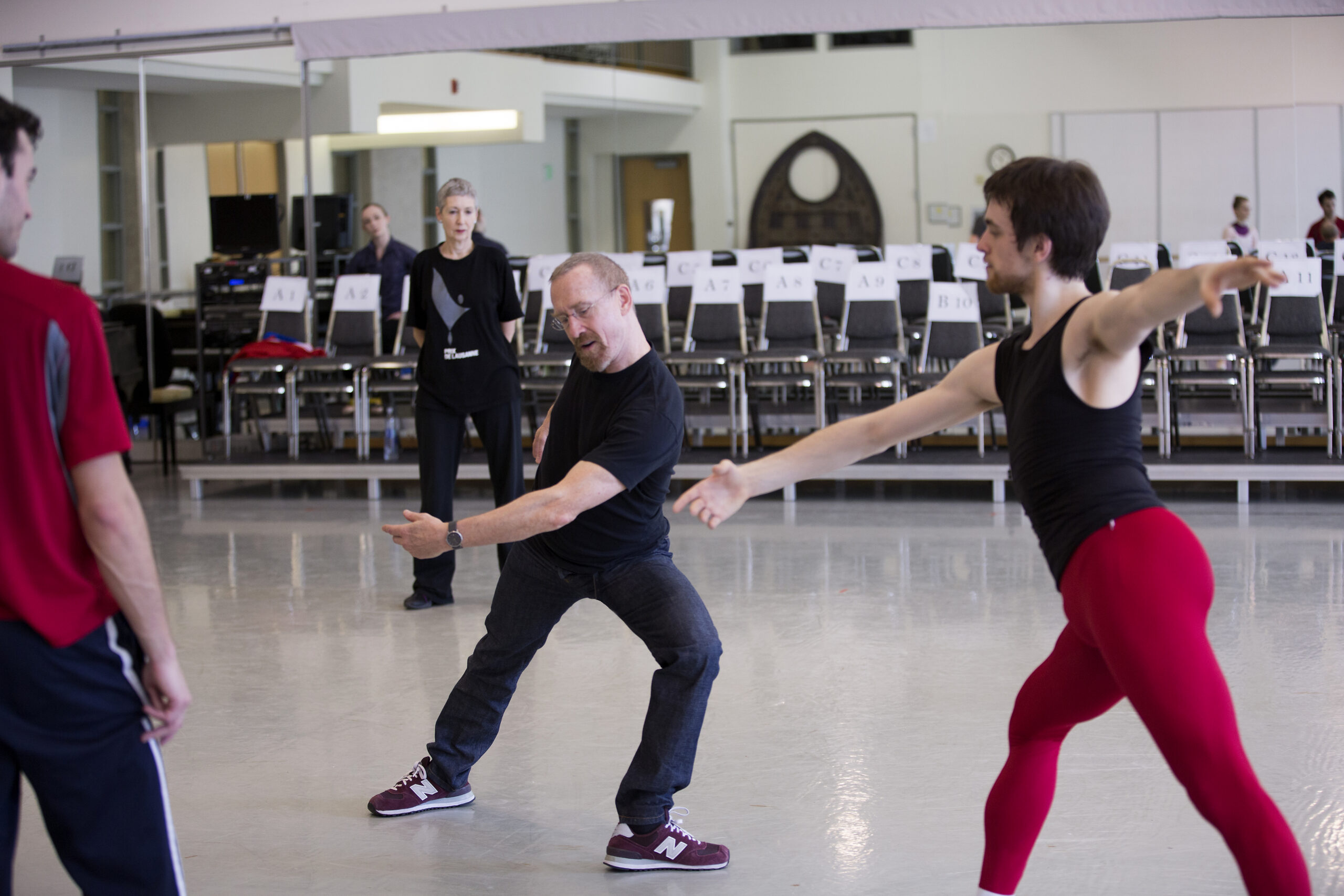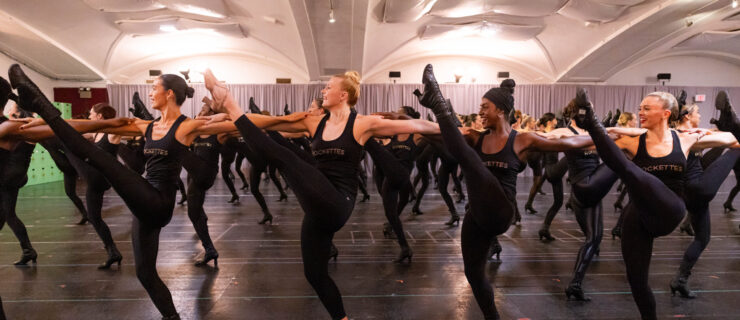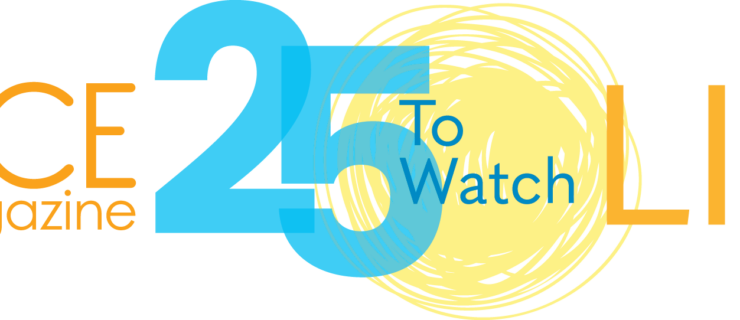The Force of Forsythe
Not content with remaking ballet, the choreographer is pushing theatrical boundaries.
William Forsythe made his first work (a pas de deux called Urlicht) in his living room in 1976. Since then—as a choreographer with the Stuttgart Ballet; then as head of the Frankfurt Ballet; now with his own company—he has fundamentally changed the way we look at, and think about, classical dance. Like Balanchine, Forsythe has enlarged the physical dimensions of the form, first forgetting, then changing conventional limits on balance and flexibility, the constraints of a vertical torso and unweighted arms, the practices of partnering, and the uses of pointe work. Early on, Forsythe also expanded the theatrical possibilities of ballet, bringing improvisation, speech, film, highly innovative lighting, intellectual propositions, and surprising visual effects into some of his works in ways that shocked audiences as often as they delighted them. Born on Long Island, Forsythe grew up “always dancing around,” and studied ballet with Christa Longo at Jacksonville University in Florida. He left school to accept a scholarship at the American Ballet Center (the school of the Joffrey Ballet), spent his evenings watching the Joffrey Ballet and the New York City Ballet, and joined the Stuttgart Ballet at 23. After critics hailed Urlicht as the creation of a distinctive new talent, Forsythe became Stuttgart’s resident choreographer. He made 10 pieces before embarking on a freelance career in 1980. Four years later, he took over Ballett Frankfurt, then a respectable provincial ballet company. Over the next two decades, Forsythe created a body of work for this company—and a number of groundbreaking ballets for others—that established him as the foremost dancemaker of his generation, and established the 35-member Ballett Frankfurt as perhaps the first truly contemporary ballet company.
In 2004, amid huge public outcry, the city of Frankfurt cut his funding to such an extent that Forsythe was forced to disband the company. After some initial uncertainty, he formed a new 18-member company in January 2005, funded by the states of Saxony and Hesse, the cities of Dresden and Frankfurt, and corporate sponsorship. With this company, Forsythe has concentrated on smaller-scale, installation-like pieces. But one certainty about this choreographer is uncertainty. His work seems to have moved far from the neoclassical pieces of his early career, or the spectacular, theatrical full-length works of the Frankfurt era, but what he will do next remains unpredictable: Forsythe has always been reliably capable of surprise.
Dance Magazine editor in chief Wendy Perron interviewed Forsythe by phone about his singular approach to choreography and the upcoming performances of The Forsythe Company at Brooklyn Academy of Music in May. —Roslyn Sulcas
Wendy Perron: What qualities do you look for in a dancer?
William Forsythe: I’m looking for autonomous artists, people whose own creativity is a priority, movement investigators. This is a choreographic collective and everyone is constantly creating with each other.
And what made you want to work that way?
Being in the front of the room by yourself is a privilege, but working in a group is even more fascinating. Plus I like helping dancers realize their own desires if they have the intense desire to investigate dancing. If that’s there I will do everything I can to help that person realize that vision of themselves. The dancers in Frankfurt are very responsible for themselves and often for their own material. We work so that everything is in flux. So, for example, what you have invented three years ago might not be commensurate with your experience three years later, so we go in and change it and modify it and alter it.
And do they say, “Bill I’m just not happy with this part. Can we change it?”
Absolutely. Yesterday Dana Caspersen and her partner came up and they said, “We’ve taken out the lame parts.”
Did they mean artistically lame, or one-legged lame?
Everything—artistically, choreographically, kinetically. And I said, “Thank you.” I don’t always have to look for myself in the choreography.
Did you used to look for yourself? Have you changed that way?
Well, early on you think dancers are supposed to be convinced by your ideas. But gradually I became interested in finding ideas that would engage the dancers’ critical faculties. In other words, to see if these ideas had a kinetic core that resonated with their individual bodies and talents and backgrounds.
Is it fair to say that the idea comes before the movement?
Definitely yes and no! Often it does, but equally often the movement is there first and we try to figure out the categories that govern these motions, and we expand those and work from them. Other times the movement comes straight from ideas. Either way, the dancers contribute what they think that particular idea means to them. Sometimes they respond with texts instead of movement.
Talking about ideas, tell me about
Kammer/Kammer, the piece you’re bringing to BAM.
The work is based on two extraordinary pieces of text by Anne Carson and Douglas Martin. It is about two characters who reflect on the nature of their homosexual love affairs and their eventual, devastating demise. The choreography, though, is for the camera. It’s a live film, a film that gets made before your eyes.
There are a lot of screens in it, right?
Yes, and a lot of cameras. What happens is that the audience tries to figure out how the images are being constructed. They become torn between watching the screen images and watching the live performance, and eventually one overwhelms the other; that actually reflects the narrative that’s taking place. I have two brilliant actors in the company, Dana Caspersen and Antony Rizzi, and I made this piece because these dancers were in the ensemble.
What’s the international makeup of The Forsythe Company?
Japanese, French, Italian, American, Spanish-Basque, Tibetan, Swiss, German, Greek, Austrian.
Now that you have a smaller company than before, have you changed the way you work?
I have to be careful not to overload people. Every director has this problem, which is keeping people busy enough but not too busy. And also varying the repertoire enough so that different coordination patterns are used during the year, so you’re not just doing one kind of motion.
Since your work is so physically demanding, do you have a way of protecting the dancers from injuries?
A lot of my work is based on counter-curvature, moving in opposing curves. Kind of like DNA; imagine a helix. You call it “helical,” don’t you, in English?
Ooh I don’t know. Maybe “hellish.”
[Laughs out loud.] No, helical motion. So there’s a lot of displaced movement. If the arms are going one way, the hips are displacing the other way. Plus it folds a lot, so we have very little injury. Of course, people get sore and tired and strained, but because a lot of the motion comes out of their own bodies, it’s less likely to injure them. We just did 48 performances before Christmas and no one had any injuries.
That’s fantastic. You always design your own lighting. What do you work toward in lighting?
Well, obviously you are trying to make something visible. In some cases, like 20 years ago in Artifact, I was working with the idea that lights could actually obscure things. And then around 1989–90 I started working with reflected light, and tried to find light without shadows. That’s always been a big issue for me: How do you make the body really visible and plastic? If you get too much light bouncing off the limbs, you can’t observe them properly and it reduces the sense of intimacy.
Do you think your work has gotten to be more about moving with each other, group relationships, than about focusing on the skilled individual work?
Yes. Recent works are dependent on intricate, linked physical timings, which require an intense focus from one performer to the other. I’ve sort of abandoned music for the past couple of years, because our systems of observing each other this way seem to make it unnecessary. The works have become like organic clocks.
I think of that piece
N.N.N.N. with the four guys, it’s like there are lines between them. Even if they’re not touching, you get the feeling they’re touching.
This is what we’re working on. It’s called entrainment. You actually align the timing of your breath. Basically it’s a breath score in N.N.N.N. It’s so specific, you have to memorize the breathing of the entire piece.
You do pointe work that’s very different from the traditional ethereal pointe work. Tell me how you developed that.
I’ve worked with some extraordinary ballerinas in the last 30 years, in my own company and in other companies, too—at the Paris Opéra Ballet, The Royal Ballet, San Francisco Ballet, New York City Ballet to name a few. I learned something from every single one of them. And these women were all very interested in expanding the use of pointe work. I would make suggestions and they would make suggestions, and out of that grew a very supple foot work. The way I use pointe is very different from the Russians, for example. They tend to go flat and then up, almost a jump onto pointe. We use it more like a hand. I try to treat the shoe like a glove, so that you don’t let it harden the end of your limb. It enables other things to happen.
It seems to enable a more direct and sensual relationship with the floor.
Very much so. You have the flat, but you also have the fulcrum. Obviously, there’s a number of things that can happen on pointe that can’t happen on flat. But also I like alternating between one foot flat and the other foot on pointe and how much compass-like inscription evolves on the floor. It becomes more like a writing instrument in some ways.
Do you want to name some of these incredible women who helped you develop this work?
With pleasure: Tracy Kai-Meier. She was in San Francisco and then she was here in Frankfurt. Nora Kimball. She had been in Ballet Theatre, she was here also. Dana Caspersen, Jill Johnson, Birgit Keil, Judy Fugate, Leslie Carothers, Melinda Roy, Heléne Alexopoulos, Kyra Nichols, Isabelle Guérin, Sylvie Guillem, Alessandra Ferri. Laura Graham from Royal Winnipeg Ballet, and Martine Lamé from National Ballet of Canada. I’m sure I’ve made some horrendous omissions.
You were with the Joffrey in the early ’70s. Were you around when Twyla Tharp was there, and what kind of influence did that have on you?
I only got to watch performances; I didn’t get to watch rehearsal. I got to see Deuce Coupe and As Time Goes By and I thought they were fantastic. The whole group—Billy Whitener (from the Joffrey) and Rose Marie Wright and Sara Rudner (from Twyla’s group) were truly great. Richard Colton, Christine Uchida, and I were all together in Joffrey II, and we went over to watch it. I was hoping something like that would happen but I didn’t know what. She was managing to be entertaining and analytical at the same time. I thought it was really a fresh way to be.
Do people in Europe say you are a typically American choreographer? Do you feel there is something American about your work?
In Europe I never get the critique of being American, but in America I get the critique of being European. Obviously there are some things in my personality that are indelibly American, but what does it mean to make “American” work? I really can’t adhere to the idea of artists having a national identity in their styles.
When Ballett Frankfurt came to an end, was there ever an idea about coming back to the United States?
Oh ja. If it hadn’t worked out, I probably would have moved back. It just happened to work out.




